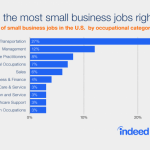
On May 18, the U.S. Department of Labor (DOL) announced final updates to the Fair Labor Standards Act’s “white collar” overtime exemptions.
The new overtime rules (known as the “final rule”) increase the salary threshold needed to qualify for overtime exemption from $455 per week ($23,660 per year) to $913 per week ($47,476 per year.) and affect 4.2 million workers.
Also, the total annual compensation requirement needed to meet the highly compensated employee (HCE) exemption will increase from $100,000 per year to $134,004.
Any business that employs workers with salaries under the new threshold will need to consider their best course of action or face paying thousands in higher wages. They could also be subject to employee lawsuits for failure to comply with the rule. No business is exempt, regardless of size.
In addition to the salary threshold changes, the new overtime rules will:
- Automatically update the salary threshold every three years, based on wage growth over time, increasing predictability;
- Strengthen overtime protections for salaried workers already entitled to overtime;
- Amend the salary basis test to allow employers to use non-discretionary bonuses and incentive payments (including commissions) to satisfy up to 10 percent of the new standard salary level;
- Provide greater clarity for workers and employers.
The final rule goes into effect on December 1, 2016.
Regarding the changes, Mike Trabold, director of compliance with Paychex, an HR technology services provider, in a telephone exchange with Small Business Trends, said:
“Historically, for individuals in certain job categories (including executive, administrative and professional), there was a longstanding salary threshold of $23,660 a year. If you had an employee in one of those categories … who makes over that threshold, you didn’t to have to pay that individual overtime if that person was an exempt employee.
“What happened over the years was an increasing concern with many of the employee advocacy groups that the $23,660 number was too low — and the practical ramifications of that was you had folks that might have been a manager at a restaurant earning $25,000 a year. But because they were designated as exempt they weren’t eligible for overtime. So we had people working 50-60-70 hours a week and not eligible for overtime.”
To address advocacy group concerns, the Obama administration raised the salary threshold to $47,476 a year, more than double the existing limit, Trabold said.
Employee Payment Options Following New Overtime Rules Change
Employers have some decisions to make when it comes to paying employees under the new overtime rules, according to Trabold.
“The exercise that a lot of employers are going through now is that they have people in that threshold between what it currently was and what it will be now,” he said. “They’re going to have to make a decision whether to increase the salary of those individuals over the $47,476 threshold, so that they will not be eligible for overtime, or they’re going to have to designate them as an hourly worker and pay them for overtime if they work over 40 hours a week.”
Limiting employees to no more than 40 hours per week could be challenging and result in a loss of productivity, Trabold said.
“That potentially impacts the employer because a lot of folks that are currently exempt from a practical standpoint are working more than 40 hours a week,” he said. “You may have a body of work that is currently getting done that you’re going to have to figure out how to address once the new rules go into effect.”
9 Ways Employers Can Prepare for the Final Rule
Trabold provided the following checklist to help employers prepare before the new overtime rules go into effect December 1, 2016.
1. Determine the Final Rule’s Impact on Your Business
Employers should become familiar with the rules changes to determine their overtime situation.
Trabold said that recent research conducted by Paychex found that one out of five employers were not aware of the final rule, and 55 percent did not think it applied to them.
2. Conduct an Audit
Conduct an audit of the employees who are likely to be affected. Trabold advised beginning with a basic review of current staff, exempt status and compensation levels.
Employees currently classified as exempt from the overtime protections of the Fair Labor Standards Act need to meet the duties test for their exemption as well as the salary threshold.
“Work with your accounting and HR teams to review your payroll and identify exempt employees with current salaries below or very close to the new proposed thresholds,” Trabold said.
3. Track Exempt Employees’ Time
Employers should start tracking their exempt employees’ hours — those who make below the $47,476 threshold. It’s critical that employers have accurate hourly data and a clear audit trail for when their employees have worked for a few reasons.
“There will be a lot of employers that, to manage this expense, will move people who are currently exempt to hourly,” Trabold said. “That may make a lot of sense in terms of managing the economics, but will make it more important, obviously, since they’re now hourly employees, to very accurately track their time and the hours they work so they’re paid correctly.”
Trabold also said employers need to track the time exempt employees spend working from home after hours, since it, too, would be compensable.
4. Determine Which Employees Will Transition to Non-exempt Status
Once employers identify the exempt employees who will be affected by the rule, they will need to decide whether to increase their salary levels to maintain exempt status or transition the employee to non-exempt status.
“Employers who choose to transition employees to a non-exempt status will need to determine the basis for pay (hourly or salaried) and ensure they meet the minimum wage requirement for the number of hours the employee is expected to work,” Trabold said. “They should also consider whether overtime will be necessary and permitted. Consistency is crucial to mitigating exposure to discrimination lawsuits.”
5. Develop a Plan
“Look at your historical overtime payments and determine whether your costs are likely to increase due to hours worked,” Trabold said. “Conduct some scenario planning with your advisors and ask the following questions: Should you increase your budgets for essential staff? Should you consider hiring more staff or revisiting your compensation model for specific employees?”
Looking at the impact of the new rules on the business’s financial picture will put employers in a better position to take the most appropriate form of action, he said.
6. Update Timekeeping Policies
Updating record keeping requirements and procedures can be critical to ensure full compliance, according to Trabold.
“Review your time-tracking methods and evaluate if there’s a need for more automation,” he said. “Should the new rule significantly impact the number of employees who need to track their hours worked, an alternative method of tracking, such as time and attendance software, may better suit your needs.”
Trabold indicated that it was also important to establish clear, written employee policies for recording time worked and overtime.
7. Develop Training Procedures
Employers will need to educate staff on the company timekeeping and overtime approval procedure after updating record keeping and overtime policies.
8. Create a Communication Plan
The new rule on overtime pay is expected to impact a significant number of businesses this year. To combat the questions or concerns that arise, Trabold advised developing a communication plan for announcing the changes internally.
“Businesses should clearly communicate changes to policies and procedures with employees, making sure that there is a lot of transparency about any changes and what any new expectations to employees are,” he said.
9. Start Preparing Now
Employers with employees who may be affected should take the initiative now to evaluate the company’s standing, look at how different scenarios will impact their bottom line and determine how they will move forward, to best avoid wage claims and other issues.
“Employers need to start making plans now to ensure they understand what the regulations set means because the implementation date is not very far off,” Trabold said.
He advised that employers consider working a professional HR consultant or compensation partner to understand better the potential impact of the rule changes and their options moving forward.
[“source-smallbiztrends”]




